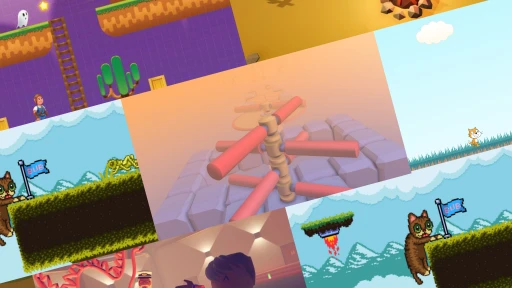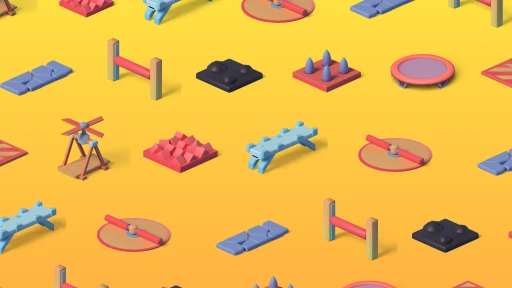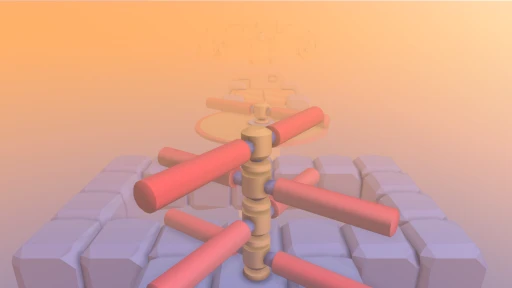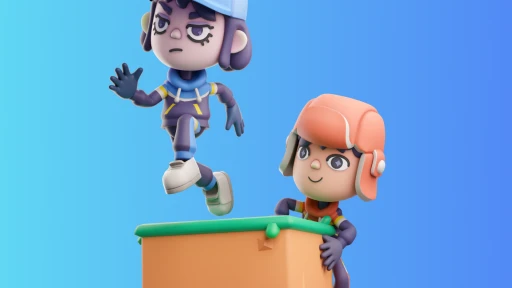Beginners Guide To Making a Sidescrolling Platformer Game
If you grew up in the 80s, 90s, or 2000s, there's a good chance you spent hours glued to your TV playing Super Mario Bros. games. The classic 2D platformer has been around for decades, and there's a reason why: they're addictive.
But you might be wondering what makes a good platformer game and how you go about creating one yourself. In this article, we'll take a look at the essentials of creating a platformer game – from the storyline and color design to offering collectibles and user experience. So, if you've ever wanted to make your own platformer game, read on.
What is a platformer game?
A platformer game is a 2D game that involves navigating a character across platforms or ledges. The goal of the game is to reach the end by avoiding obstacles, collecting items, and fighting enemies.
When you make a platformer game, it's essential to put yourself in the shoes of the gamer. And to draw inspiration, sometimes it's a great idea to take a look at other high-performing platformer games to see what they did right. Then, figure out ways to make your platformer game better.
Here are some examples of platformer games:
- Super Mario Bros.
- Sonic the Hedgehog
- Donkey Kong
- Turrican 2
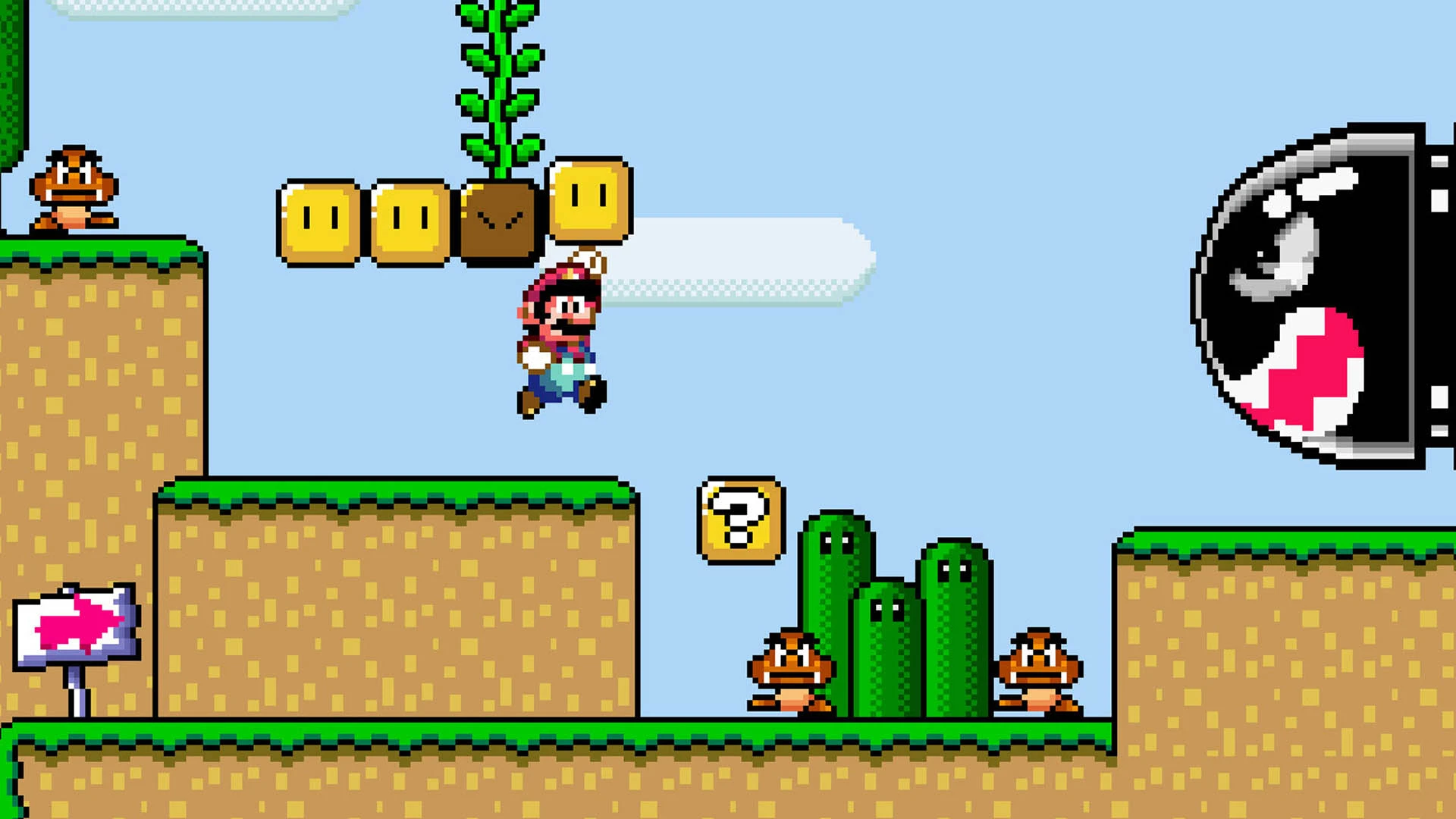
Basics of creating a platformer game
When creating a platformer game, it's crucial to get the essentials right. One of the most critical elements is the storyline. Your story should be engaging and captivating – something that will draw the gamer in and make them want to keep playing.
So how do you get this effect?
First, you have to humanize your characters and make them relatable. Think about Super Mario games. They start with Mario losing something very precious to him, Princess Peach. Or, think about Disney movies like The Lion King, where the main character Simba loses his father. These stories are inspiring and make gamers want to complete the game's quest. When creating your platformer game, consider how the gamer feels and reacts to the setup. Your goal is to get them invested so they enjoy your game!
Another essential element is color design. When designing your platformer game, it's important to remember that bright colors can create a more dynamic atmosphere than dull ones. Try to use contrasting colors to make the game more visually appealing and inviting.
Additionally, remember how colors portray different emotions. For instance, most candy wrappers and fast-food restaurants heavily lean into the colors yellow, orange, and red. These fiery colors energize a person and incite them to action.
Shades of blue and purple are considered light-hearted, soft, and calming. Use these colors wisely to capture the tone of your game.
The game's user interface (UI) is also a core element of a platformer game. Your UI should be intuitive and easy to navigate for gamers of all levels so they can quickly learn how to play your game. Along with the UI come objects, obstacles, and characters, which should be optimized as well.
You want objects and obstacles to be challenging but not impossible. A good rule of thumb is to start your game with easier obstacles and progress to the more difficult ones. And when creating characters, make sure they're memorable and realistic-looking. Lastly, ensure that your game's overall aesthetic is pleasing and uniform. Choose a color palette and stick to it.
Advanced platformer game development tips
Now that we've covered the basics let's explore some of our advanced tips for making the best platformer game possible.
Collision boundaries
Collision boundaries are invisible walls that block off objects, characters, and obstacles from interacting with each other. In addition, it's the amount of space that will trigger an event from your character interacting with it. For example, if your character jumps onto a ladder to climb, you'd want to make a bigger collision boundary than usual. In general, make slightly larger collision boundaries for friendly objects and slightly smaller ones for harmful objects. When designing your collision boundaries, make sure they're consistent with the environment, so gamers don't get confused or frustrated.
Game mechanics
Creating fun game mechanics will be the foundation for your platformer game. Will you include double jumps? Wall jumps? What about collectibles? Consider adding coins, power-ups, and special items for gamers to find as they play. Not only will it give them something to look forward to, but it will also provide an incentive for them to keep playing.
Next, how will the difficulty of your game progress? You always want to make sure it's noticeably more challenging from level to level without overdoing it. Introduce new enemies, obstacles, and items as the gamer progresses.
Additionally, what about game logic, health, and scoring? Most platformers have a health meter, so the gamer knows how much damage they can take before they die. And, scoring encourages gamers to compete or complete tasks in order to get a higher score than their friends. These components make your game more shareable and competitive.
Finally, your game should always be fun!
As you're designing your platformer game, make sure it's something you would want to play yourself. Consider making it replayable by adding hidden levels or mini-games that give players extra points or rewards. Or maybe include shortcuts. It'll give players a reason to talk about your game on social media as they share the Easter eggs they found.
User experience
User experience (UX) is critical when designing any platform game. As the game designer and developer, your goals are to keep players gaming, get players to share it with friends, and make the experience positive and fun.
We've covered several ways to improve user experience in this article, so what else? Here are a few more tips:
- Allow gamers to save their progress.
- Offer multiple difficulty levels and achievements.
- Incorporate leaderboards and social media sharing opportunities.
- Include helpful hints and rewards for completing difficult challenges or accomplishments.
- Keep your game organized so gamers can easily find what they want
Create prototypes and improve on beta versions
When you have an idea of what your platformer game should look like and how it should play, we recommend creating a prototype. It's a great way to take some of the pressure off while making significant progress. Then, once you've built the prototype, try testing it with some gamers. Ask them for their feedback and suggestions on how to improve your game.
And when you're ready to launch a beta version of your platformer game, make sure you take all the feedback you got from your testers into account. You should also make sure your game is easy to understand and intuitive to play. Lastly, test your beta version multiple times before launching it.
Final thoughts
Creating a platformer game may seem daunting at first, but don't let that stop you! Many great games have come before you. From them, we’ve learned what works and what doesn’t. In this article, we’ve shared the best tips to get you started, even if you’re a beginner.
Keep at it and enjoy the journey as you go. Remember to follow the tips in this article and you'll be on your way to creating the next big game. We wish you all the best in your game development endeavors!
